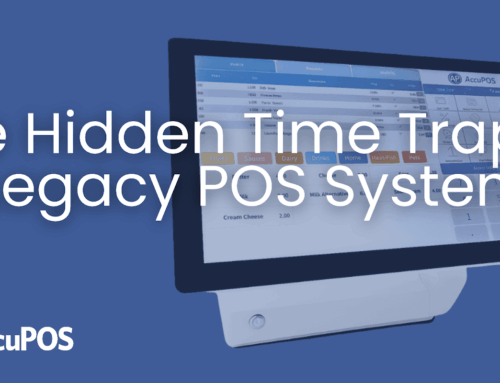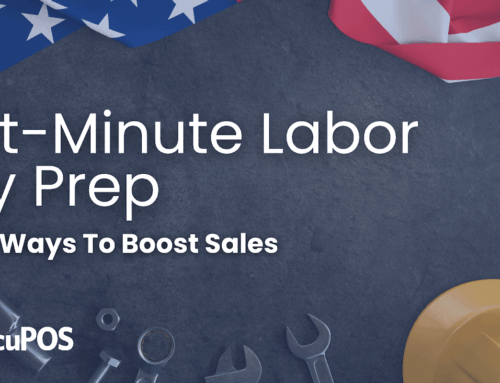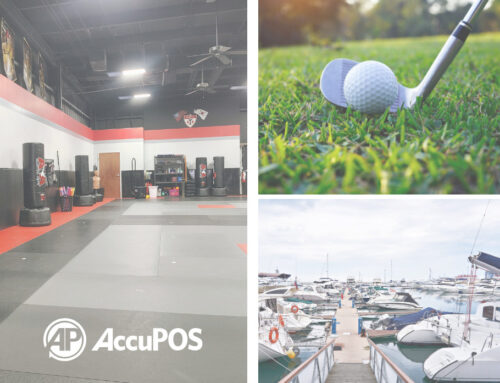A successful restaurant is a result of a strong management team but finding a good manager is challenging. Keeping them is even harder due to the competition for their skills.
There are two types of managers in the restaurant business:
- Those who under-perform and don’t have many other options.
- Those who feel proud of their restaurants, loyal to the ownership, and are motivated to keep developing.
Restaurant entrepreneurs who employ the latter don’t land them by accident; they cultivate them. They compensate these managers fairly and provide them with direction: a detailed position description, realistically outlined operating procedures and clear company objectives. These restaurants also have focused concepts with a developed culture of performance and accountability within their teams.
Smart restaurant owners have instituted compensation incentives aimed at giving managers a stake in the performance of the business. A manager who’s on board with the goals and objectives of the company, has control in achieving those targets, and is rewarded accordingly, is a manager who thinks like an owner. Win-win!
Independent restaurants are limited in their ability to provide advancement opportunities for management staff. In these situations, keeping managers motivated in an environment where they are already in the top spot is an owner’s challenge. Compensation Incentive Plans (Bonus Plans) are a mechanism for rewarding hard work, encouraging professional growth, and cultivating a sense of ownership resulting in job satisfaction and management retention.
I: Identify the Performance Criteria for Your Operation
First, start with well-defined Job Descriptions and a clear set of Operating Procedures to determine the parameters of each management position. Next, determine what areas of performance, company as well as individual, are within the scope of control and responsibility for each management position. Lastly, define what constitutes good and exceptional performance, establish goals and define targets and rewards.
A: Restaurant Performance Criteria
- Sales
- Costs
- Profit
- Individual Performance
B: Consider the Performance Criteria Areas
Sales
- Total Sales
- Sales of a product, meal period, day/month
- Food, Wine, Dessert
- Lunch, Dinner
- Monday, August
- First quarter of the year
- Sales of a cost/revenue center
- Bar, Dining room, Patio
- Take-out, Banquets, Off-premise catering
Costs
Look at the primary expenses for which the manager is responsible.
- Product (food, beverage)
- Labor
Consider smaller areas that might need control as per a budgeting goal.
- Paper products
- Cleaning supplies
- Linen
Don’t confuse Cost Control with Cost-Cutting. While pushing managers to reduce costs can be good for the bottom line, it also holds the potential to negatively affect service and quality. That kind of negativity can have a far worse long-term impact.
For example:
A restaurant with a target food cost of 35% has been running an FC% of 36.4%. The chef has been charged with bringing it back in range. He/she could probably bring it down to 30% by reducing portion size and cutting back on the quality of a few key ingredients. If this happens, the impact on guest perception and satisfaction would be disastrous.
Instead, implementing a sliding scale target, with a top end goal, increments of a % of bonus earned, and a penalty for going too low, would focus the chef on inventory control, waste, bidding for product, etc., rather than resort to sub-par ingredients or skimpy portioning.
Profitability
Bottom line profitability as a percent of the total budget is also a standard criterion for management incentives. Only honest accounting will generate management trust that the profit number represented is accurate. Backing out dubious expenses is essential to gain confidence in this calculation. A cap on owner compensation is also a consideration when using bottom line as an incentive.
Some restaurateurs choose to dedicate a predetermined percent of profit toward management incentives. Another approach is to include Company Profitability as one of the several weighted criteria in a comprehensive plan.
Performance
- This is an all-encompassing area that can include:
- Customer Comments and Social Media Feedback
- Secret Shopper Reports
- Health Inspector Reports
- Individual Performance Reviews
- Special Projects and Goals
- Employee Retention Initiative
- Participation in Professional Development Opportunities
- Creation of a Manual for XYZ
- Introduce a wine education program for front-of-house staff
- React to repeated complaints
- Improve greet time at lunch
II: Set Goals
Some goals are the prerogative of ownership such as timing of an exit strategy. Other targets are loosely set by industry standards such as food cost in an upscale restaurant vs. fast food. Those that can be established collaboratively with your management team are the ones they will support most enthusiastically.
To start, sit down with your management team and discuss the goals you would like them to achieve. If they are involved in defining these goals, they will be more invested in them.
Once goals are established, make sure they are clearly written down and measurable criteria are in place. Vague promises of reward can seem less concrete and are easily forgotten.
Analyse and test the goals to be sure that they are related to aspects of the business that are within the control of the manager and are realistically achievable. Remember that targets and incentives are performance and morale boosters. Unrealistic ones deflate morale. Starting lower, achieving and building up, can do more for morale than starting high and failing to reach targets interval after interval.
Example
GOAL
- Reduce turnover of new hires in the dining room
- Increase Monday Sales
- Maintain restroom tidiness during service
- Reduce costs of overtime
- Improve rating on Health Inspection report
- Run Wine Cost at 34%
III: Establish Targets
Consider the performance criteria outlined earlier.
Sales goals can be overall, product specific, or relate to a cost center. If you are looking to increase sales on Mondays, you need to know what Monday sales have been historically for your establishment. Whether they are a dollar amount, a percent of overall sales in a particular period, or $X at lunch and $Y at dinner. Decide what you’re aiming for.
Example
| Goal | How are you going to do that? |
|---|---|
| Increase overall sales on Mondays this fall by 10% | Offer a two-for-one incentive via constant contact email list for … (Example – a historically slow week or Memorial Day week). Post an announcement on Facebook (Example – mid-day on Sunday) promoting the specials for Monday. Make sure the special is appealing. Target a certain audience, figure out how to do this for free, if possible (Example – college students and professors via Facebook) Schedule additional employees or necessities to handle the increased volume… |
| Bring 36% Wine Cost back to the 34% | Target Re-evaluate current wine pricing/costs for each wine on the list. Develop a spreadsheet to evaluate product mix and play with price tweaks. (Example -if we increase top selling wine X by $1, what does that do to the overall PC?) Clean out under-utilized storage area to free up space for wine to take advantage of multiple case discounts. |
| Improve Health Inspection Score to 90% or above | Say your restaurant is in an area that issues a number score on Sanitation reports. You’ve been getting 80%+/-. Require ALL back-of-the-house staff and Management to complete and pass ServSafe training. Upgrade dishwasher to one with a reliable sanitation cycle. |
IV: Tracking Goals and Targets
Keep it simple. Avoid creating a paperwork nightmare!
Monitoring progress is a vital part of an incentive program. Choose easily verifiable indicators and develop ways to collate data efficiently. Avoid overwhelming yourself with administrative work, or your efforts will fall by the wayside when other priorities come up.
To make it easy, utilize reporting systems already in existence to pull the data you need to track your goals. This includes Point-of-Sale system generated reports and P&Ls provided by your accountant. Importing data that is already on hand is easier than mining new. Often your POS report generator can be used to create a new report. You’ll also need to be clear about what information you require to track goals and targets. Make sure to maintain tracking reports continuously so as not to get caught up in catching up as the time to evaluate incentive plan pay-out approaches.
Targets have the most impact when they are on everyone’s mind. Keep targets present. Post them on a white board. Use a tracking app or announce progress at a weekly meeting. Make sure your team is always thinking about them.
V: Personalize Incentive Plans
A result driven bonus incentive is holistic. It takes into account various aspects of the business. It encourages cooperation between the BOH and FOH. Depending on area of responsibility and individual performance goals, each manager’s plan will be somewhat unique.
The example below outlines an incentive bonus plan for a small to medium sized upscale restaurant with three managers. Salaries are fair, a bit above the industry average. The incentive program allows them each to earn up to an additional 20% of their base salary. The criteria are weighted, and each has specific goals. Meeting a target results in 100% bonus in that category. There are increments for being a range of over or under.
Example
| Executive Chef | 25% Profitability 45% Food Cost 10% Kitchen Labor 20% Individual Performance |
| General Manager/Beverage Director | 25% Profitability 45% Beverage Cost * 10% Project to develop a staff wine education program. 20% Individual Performance |
| Assistant Manager/ Events Coordinator | 80% Based on % of GM earned bonus 20% Individual Performance + Commission on in-house parties of more than 12 requiring special menu and planning. |
* Beverage Cost is broken into categories, each with a target and a percent of the beverage piece of the plan. Wine, Spirits, Beer, Non-Alcoholic Beverages.
* * Assistant Manager plan is directly tied to the GM’s goals as his/her role involves supporting the GM’s objectives.
V: Compensation Incentive Reward Frequency
Opinions differ about how often to evaluate progress and reward management; monthly, quarterly, annually. Most agree that an annual incentive is not as motivating as one that pays out at more frequent intervals. Quarterly involves less paper shuffling than monthly. Advocates of the annual plan swear by it as a retention tool for assuring that there is no management turnover during their busy holiday season.
Another plus for a plan with more frequent pay-outs is that it can be designed to be more fluid. For example, during a quiet off-season month where sales might be difficult to achieve, targets for excellent service or staff training can be excelled at and set the business up well for busier months.
Regardless of how often, a timely pay-out is vital. Waiting months for CPA reports and in-house bonus calculations can erode trust. For a plan designed to give management a stake in the business and encourage teamwork, owners and their administrative people have to make sure they deliver. Many managers have left acrimoniously over unfulfilled ownership promises.
Takeaway
Loyal, motivated restaurant managers, proud of where they work are an asset. Retaining those individual is a priority of ownership and can be the difference between success and failure of a restaurant. How you incentivize your managers is key to keeping them.





